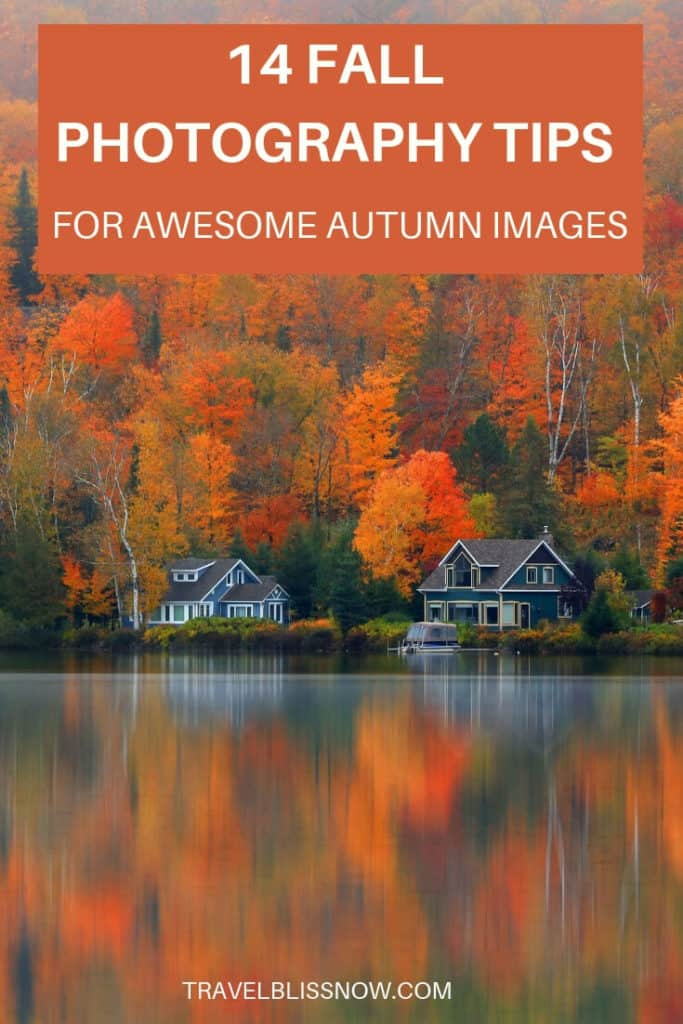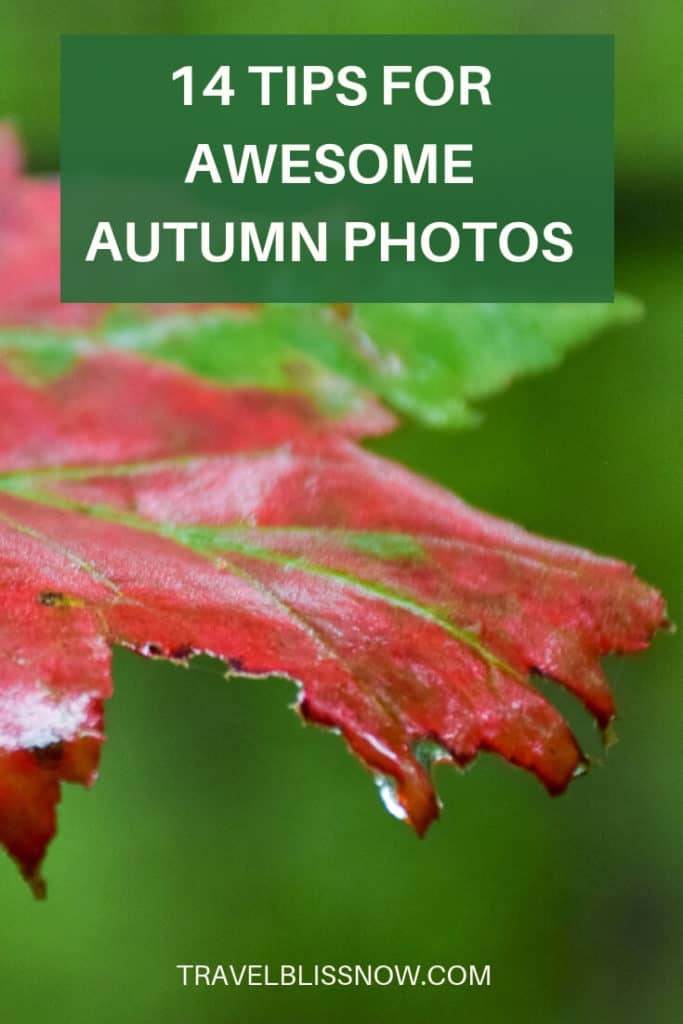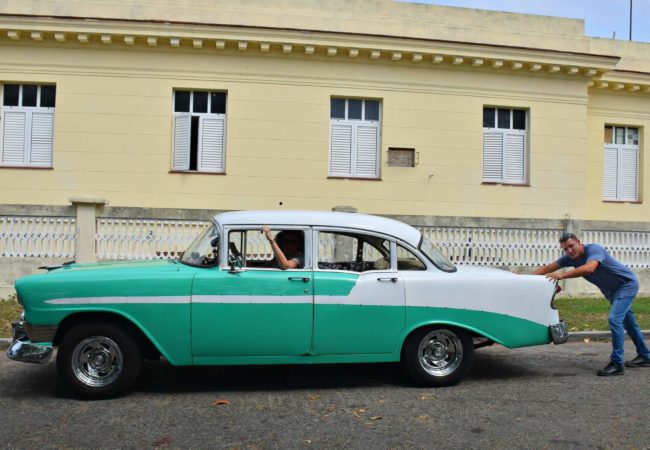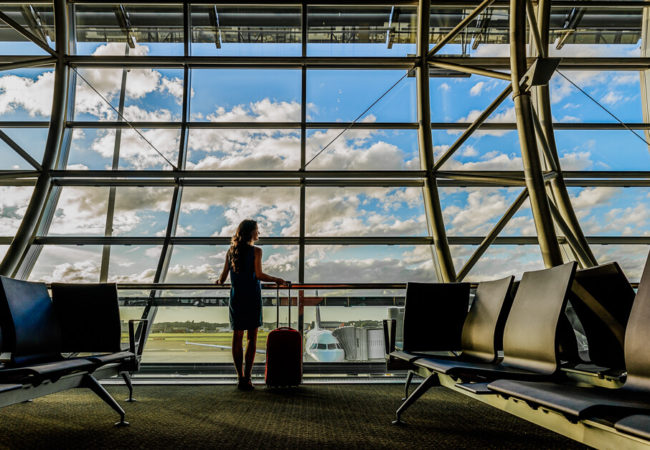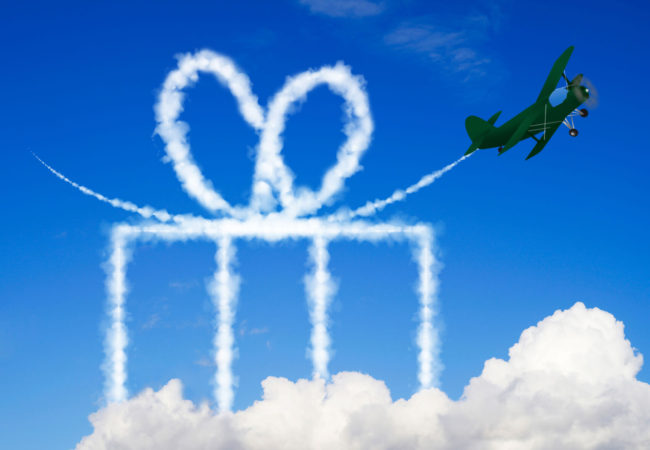In Cuba, it seems, everyone knows a guy. I recently…
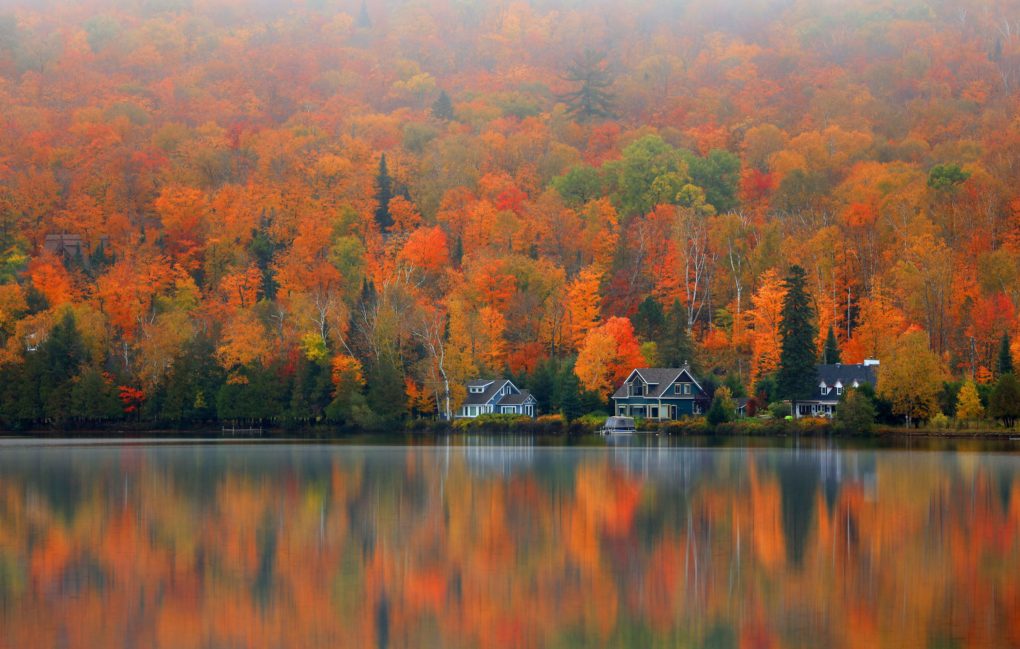
14 Fall Photography Tips for Awesome Autumn Images
Need some fall photography tips?
I love the crisp air and the pumpkin colours of fall (and pie!). I’m fortunate to live central Canada where autumn usually puts on a show of cinematic proportions.
Sometimes the fall foliage is so picturesque, it seems the photos could practically take themselves.
If only it worked that way.
However, with a little planning and these fall photography tips and tricks, you can capture photos that are as brilliant as the fall scene itself.
Fall photography tips on where and when to shoot the colours:
Choosing fall photo shoot locations
Most regions with the potential for great fall foliage have tools to predict or report on the status of the autumn colours.
In the U.S., you can check this fall foliage prediction map to plan for the peak colours of the season. Another useful site is the Foliage Network, which collects data from “fall foliage spotters” during the months of September through November.
Here are tools that I use in Canada to track the progress of the colours: the Ontario Fall Colours Progression Report and the Quebec Original web site. These are helpful when planning a visit to some of my favourite fall getaway spots on Ontario and Quebec.
There are many more tools out there. Google can lead you to the best ones in your area.
The best time of day for autumn photography
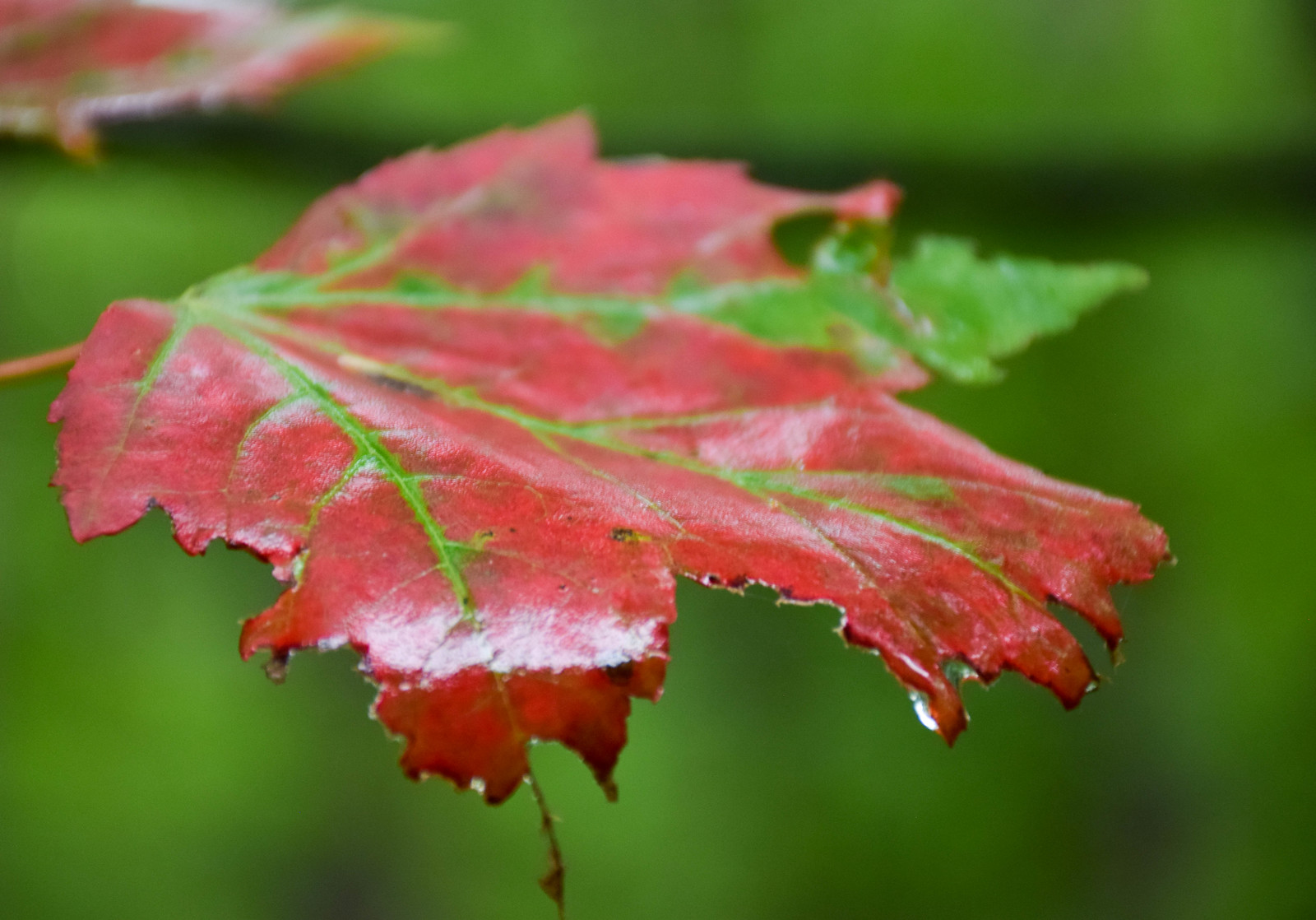
As with any landscape photos, the best times to shoot fall colours are at sunrise and sunset. The warm light during these hours makes the reds and yellows look richer.
Bright midday sunlight tends to make the colours wash out, although it can work when filtered through a forest of trees. An overcast day works well because it evens out the light, however, you’ll want to avoid including a lot of the grey sky in your photo.
Finally, don’t discount the rainy days. Rain gives a nice sheen to everything, enhancing the colours.
Fall photo ideas:
Fall reflections

Mont Tremblant, Quebec, Canada
Colourful reflections of fall foliage make fantastic photo material.
These shots tend to work best in the morning, when the sunlight is soft and the water is still.
You can also smooth out the water more by using a neutral density filter and taking a longer exposure. It’s simply a dark filter that fits on your lens to let in less light. I use a Tiffen Variable ND Filter
, but you need to make sure you get one that fits the diameter of your lens. The diameter is usually indicated on the lens, with this symbol – ø. So, for example, my lens shows ø67 for a 67 mm diameter. I prefer the variable ND filters so that you can adjust the darkness of the filter, and be able to see the scene when you’re composing it. Shop for a neutral density filter here.
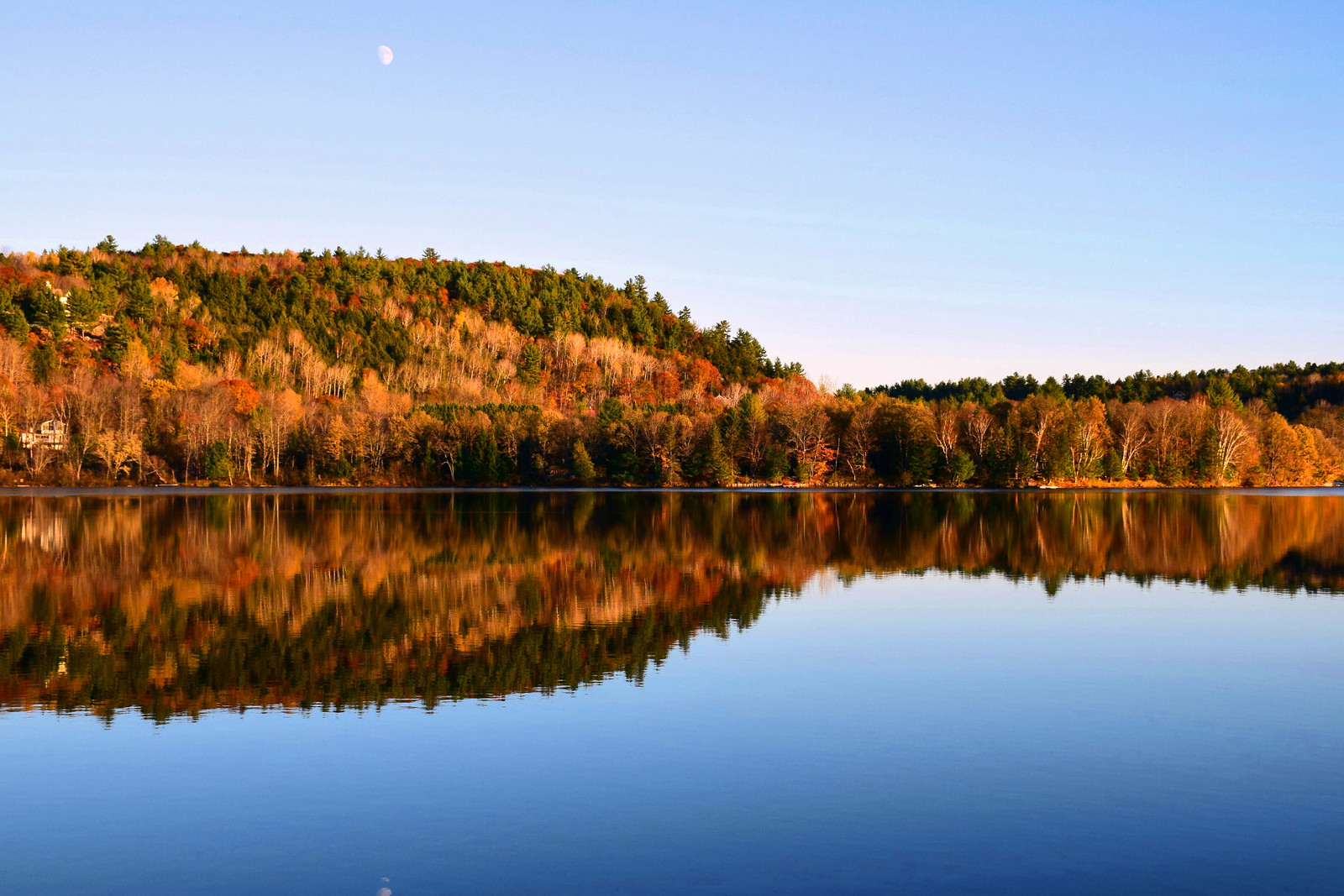
Late fall in Wakefield, Quebec, Canada
Go for the close-up

I know those big, colourful landscapes will be calling your name, but take some time out for macro shots. The textures of pine cones and the veins in fall leaves can make interesting photographs.
Have some fun experimenting with a wider aperture (lower F-stop numbers) to get the blurry background look.
Take advantage of backlighting

Here’s the exception to the rule about shooting in bright sunlight.
Sunlight behind the leaves on a tree makes them glow. It can also be great to see the detail in a macro shot. The advantage is that you can take these pics at almost any time of the day.
Try a different perspective

Photos can almost always be made more interesting by trying a different perspective.
You can always lay down on the ground and shoot up at the tree canopy. This works especially well when you have orange leaves contrasting with a blue sky.
Tree-lined road ways or lanes are a great opportunity to get down low to take advantage of the leading lines.
So, take the standard shot, and then try something different.
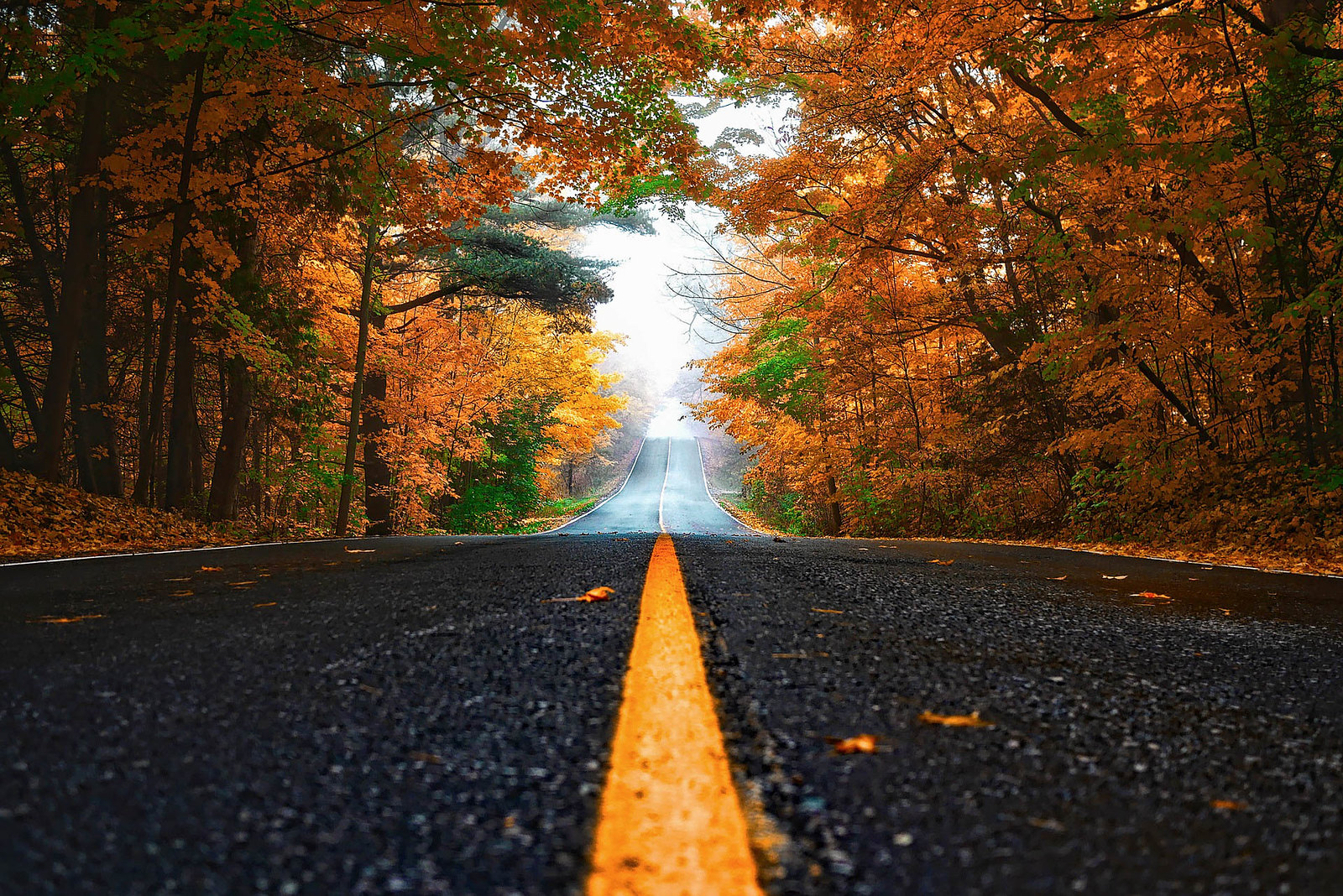
Fog is your friend

Parc Omega, Quebec, Canada
Fog and rising mist occur more often in the fall, and they can add a mysterious mood to your photos.
Keep in mind that your camera can’t focus on fog, so that you need to focus on something in the scene. In thick fog, you may need to focus on an object in the foreground.
Go beyond the leaves in your fall landscape photography

Wilson Carbide Mill, Meech Lake, Quebec, Canada
The colours of fall are obviously the big draw, but don’t forget to take photos of other subjects that look good in the palette at this time of year. Waterfalls, streams or barns and cottages are all good options. To get this silky waterfall look in the daytime, you’ll need to use a neutral density filter and take a longer exposure (around 2 seconds for example, but it depends on the light and the strength of the filter).
Fall wildlife

Parc Omega, Quebec, Canada
Fall is a perfect time of year for wildlife photography.
In Canada, love is in the air in the autumn at my favourite wildlife park in Quebec, Parc Omega. It’s rutting season for the majestic elks, so the fellas will give you a lot of proud poses. But don’t get too close. They’re known for being more aggressive when they’re busy on their own version of tinder.
Look for patterns

Jardin du Luxembourg, Paris
Tree-lined sidewalks, streets or curvy country roads can add nice patterns and lines to increase the level of interest in fall images.
For these, you’ll need to use a narrow aperture (f/16 and up) to capture the depth of field.
Fall photo gear:
Use a polarizing filter
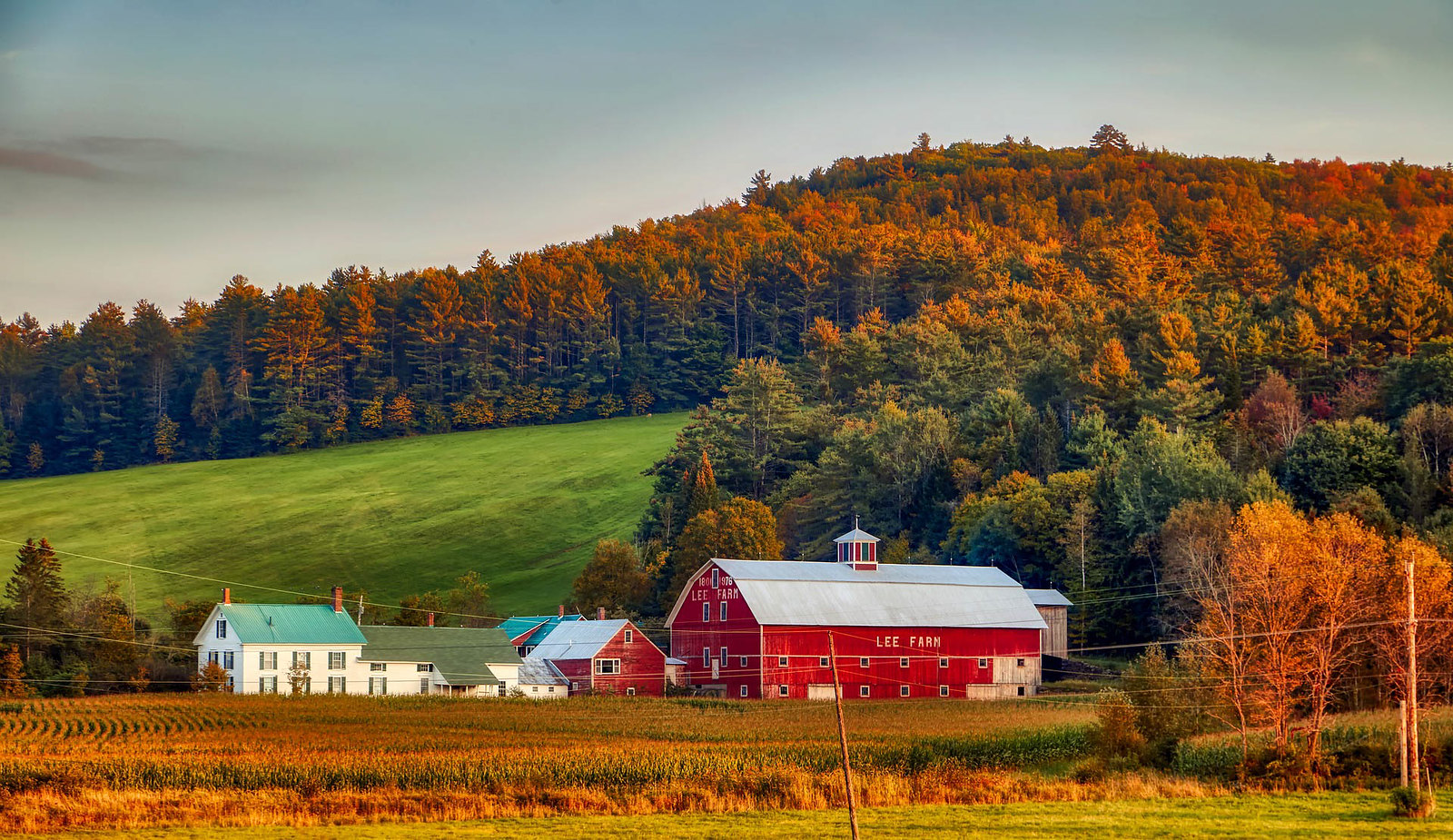
New Hampshire, U.S.
A polarizing filter on your lens acts something like a pair of sunglasses. It will make the colours richer, but more importantly, it will reduce glare — something you can’t fix in the editing process.
I use this filter, the Hoya 67 mm Fusion Antistatic CIR-PL Filter. It’s a circular filter, which means you can adjust the “polarizing” levels. As with an ND filter, be sure to get a filter that fits your lens. Shop for polarizing filters here
.
Try a tripod
Generally speaking, you’ll have a better chance at sharp photos if you use a tripod. This way, you can shoot at the lowest ISO setting.
However, if it’s windy and the leaves don’t look sharp on your screen, you may need to raise the ISO a few notches.
I use a MeFOTO Globetrotter S Travel Tripod. It’s compact and relatively light for travel, yet sturdy enough to use in challenging weather conditions. You can shop for a range of travel tripods here
.
Best cameras for fall photography:

Mont Tremblant, Quebec in Canada
As they say, the best camera is the one you have with you and it’s no different for fall photography.
Today’s smart phones will allow you to capture some pretty awesome autumn images, as good or better than many of the “point and shoot” cameras. Google’s Pixel 3 is generally regarded as the best camera phone currently available because it produces ultra sharp, detailed images. Other strong contenders are the Huawei P30 Pro
, the Samsung Galaxy S10
and, of course, the iPhone XS
. Budget options include the Google Pixel 3a
or the iPhone 8
.
I use a Nikon D5300 DSLR. I’ve had it for some years, so it’s not the latest and greatest. However, it’s a solid entry-level DSLR with 24 MP, HD Video and Wi-Fi Connectivity. The one disadvantage is that it’s rather bulky, although I find that helps me hold the camera steady. With this camera, I use my “all-purpose” Nikkor 18-140mm lens
for fall photography, as the scene gets lost with a wider angle.
If I was starting over, I would get a mirrorless camera due to the smaller size and weight for travel. And if I could have my pick (dream camera), I’d go for the top of the line, full-frame Nikon Z7 or Sony A7R III
(or the soon to be released A7R IV). With over 40 PX and excellent image stabilization, both deliver incredibly sharp images. However, they’re not inexpensive. More affordable options would be the Sony A6000
, Olympus O-M D E-M10 Mark III
or the Fujifilm XT30
.
Always have extra memory cards:
It’s easy to go overboard when you’re taking pictures of the fall beauty. And why not?
So, it’s always a good idea to have extra memory cards on hand. I usually use SanDisk Memory Cards with 32 or 64 GB capacity. Unlike some cheaper cards, I haven’t had any corruption problems so far with these ones. I prefer to have extra cards, rather than go for the huge capacity cards that are now available. If something should go wrong, then not all of the photos are at risk.
Shop for SanDisk Memory Cards here.
I hope these fall photography tips will help you capture stunning autumn issues. Enjoy the beauty of the season!
More Information:
My photography gear: I use a Nikon D5300 DSLR with an 18 – 140 mm lens, a Sigma Wide Angle Lens, a MeFOTO Globetrotter S Tripod and SanDisk Memory Cards. Filters: Hoya 67 mm Fusion Antistatic CIR-PL Filter and Tiffen Variable ND Filter (Click on links for specs & prices).
Suggested Reading:The Landscape Photography Book: The step-by-step techniques you need to capture breathtaking landscape photos like the pros, The Art of Landscape Photography
Pin it:
5 Gorgeous Fall Getaways in Central Canada
10 Spectacular Road Trips in New England
Things to do in Mont Tremblant, Canada When It’s Not Ski Season
5 Reasons for a Fall Visit to this Wildlife Park in Canada
6 Romantic Getaways in the Northeastern U.S.



